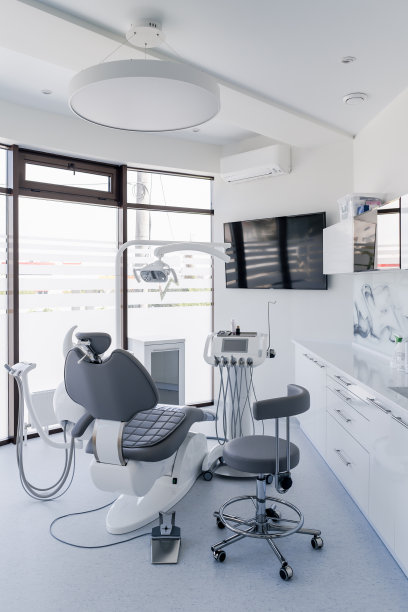Understanding the Procedure and Aftercare Involved in Extracting a Tooth for a Healthier Smile
Summary: Tooth extraction is an essential dental procedure that can lead to a healthier smile. Understanding the steps involved, from the initial consultation to the extraction day itself, is crucial for patients. This article also highlights the importance of aftercare to ensure a smooth recovery and prevent complications. A positive dental experience can significantly impact overall oral health, and being informed about this process is essential for anyone considering tooth extraction. We will explore four main aspects: understanding the procedure, preparing for extraction, post-extraction care, and recognizing potential complications to equip you with knowledge that promotes a healthier smile.
1. Understanding the Procedure of Tooth Extraction

Tooth extraction is a common dental procedure, but understanding the details can alleviate some patient anxiety. The first step usually involves a thorough examination, where the dentist assesses the tooth and surrounding tissue. Diagnostic imaging, such as X-rays, is often used to evaluate the tooths position and roots. This assessment helps determine whether extraction is necessary, especially if there are signs of infection, decay, or overcrowding.
Once the decision for extraction is made, the dentist will explain the procedure in detail. Generally, the extraction can be classified into two categories: simple and surgical. A simple extraction is performed on visible teeth that are intact, while a surgical extraction involves teeth that are impacted or not easily accessible. The choice of anesthesia, whether local or general, is also an important part of this process, ensuring patient comfort throughout the procedure.
During the actual extraction, the dentist carefully loosens the tooth using specialized dental tools. This ensures a smooth removal process while minimizing damage to surrounding tissues. Once the tooth is extracted, the dentist may place gauze over the extraction site to control bleeding and promote clotting. Understanding this procedure can help patients feel more at ease and prepared for the experience.
2. Preparing for the Extraction Appointment
Preparation for a tooth extraction is a key factor in ensuring a successful outcome. Patients are encouraged to have a discussion with their dentist regarding any medications they are currently taking, as certain drugs may affect the healing process or increase bleeding risk. Additionally, patients should inform their dentist about any allergies or medical conditions that could complicate the procedure.
On the day of the appointment, it’s advisable for patients to arrange for a friend or family member to accompany them, especially if sedation is involved. Having someone support them can ease anxiety and provide help post-procedure. It’s also important to follow pre-operative instructions, which usually include fasting for a specific period if sedatives are going to be used.
Patients should also mentally prepare themselves for the experience. Being informed about what to expect before, during, and after the extraction can help reduce stress. Understanding the importance of relaxation techniques, such as deep breathing or meditation, can contribute positively to the overall dental experience.
3. Essential Aftercare Following Tooth Extraction
After the extraction, proper aftercare is crucial for effective healing and to prevent complications. Immediately following the procedure, patients are advised to keep the gauze in place to help control bleeding. It is essential to avoid spitting or using straws, as these actions can dislodge the blood clot that forms in the socket, a condition known as dry socket.
Additionally, maintaining a soft diet is recommended for the first few days post-extraction. Foods like yogurt, applesauce, and smoothies can nourish the body without requiring excessive chewing. Staying hydrated is also important, but patients should avoid carbonated beverages and caffeine during the initial recovery period.
Monitoring the extraction site for any signs of infection, such as increased swelling, severe pain, or discharge, is essential. If any adverse symptoms arise, it’s important to contact the dentist immediately for evaluation. Following prescribed pain management and any antibiotic regimen will further ensure a smooth recovery process.
4. Recognizing Possible Complications and When to Seek Help
As with any surgical procedure, it’s vital to be aware of possible complications following a tooth extraction. While many people experience a straightforward recovery, some may face challenges like prolonged bleeding, infection, or dry socket. Understanding these risks helps prepare patients to seek timely medical assistance if necessary.
Prolonged bleeding beyond the first few hours can indicate that the clot has been disturbed or that additional intervention may be needed. If this occurs, patients should apply pressure to the area and contact their dentist for advice. Similarly, persistent or worsening pain after the initial days could signal an infection, requiring prompt dental evaluation.
In addition, dry socket can occur when the blood clot fails to develop properly. Symptoms typically manifest a few days post-extraction, including intense pain and an unpleasant taste in the mouth. Recognizing this condition early allows for quicker treatment, which may involve cleaning the socket and placing a medicated dressing to promote healing.
Summary:
Understanding the whole process of tooth extraction, from preparation through aftercare, empowers patients to navigate their dental care confidently. By being informed about the procedure, preparing adequately, following aftercare guidelines, and recognizing complications, individuals can promote a healthier smile and ensure a smoother recovery. Integration of knowledge into dental experiences can lead to better oral health outcomes.
This article is compiled by Vickong Dental and the content is for reference only


